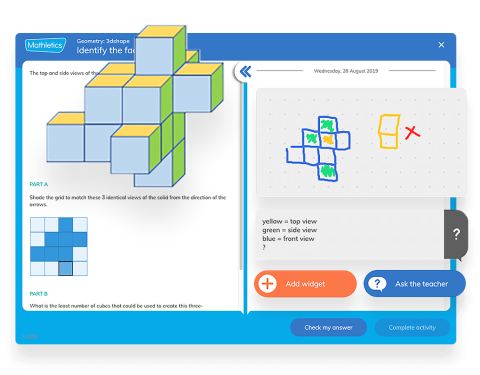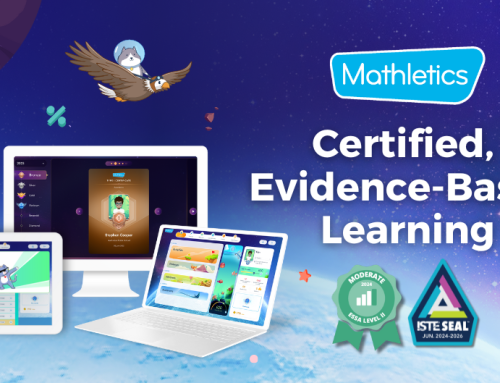Mathematics can get stale fast. Worksheets age poorly, practice questions start to blur, and enthusiasm for the subject can fade.
What we want is a way to make mathematics engaging, make it rewarding, and make it stick.
That’s where we can use games and gamification. But first, a refresher:
What is gamification and why does it work?
Gamification is overlaying a set of rules and rewards on educational activities. You might use a sticker chart, points system, or get students to see who can answer questions the fastest.
For example, Mathletics transforms multiplication practice into a competitive game with Multiverse, and uses Live Mathletics to gamify practice and fluency.
Games and gamified activities are effective learning strategies because they engage students and provide them with incentives for continued practice.
We engage students with mathematics learning through such features as:
- Competition between students in a class
- A points system
- A personal avatar that they can update with in-game points
- Animated progress bars (with puns and jokes as completion rewards)
To get the same results outside the program, make games that are simple, visually engaging, and personal.
If you have mathletes in class who love a challenge, then don’t miss out on World Maths Day – the world’s largest online mathematics competition!
Are games good for mathematics assessment?
Games and gamification can provide unique insights into your students’ learning ability.
Some students perform well when competing, others will prefer to beat their top score from yesterday.
They also show you the varied ways students approach problems and how they solve them.
By observing students playing with mathematics, whether it’s over their shoulders or through data, you can learn more about what they think, how the process, and where their strengths and struggles are.
Teachers have found a lot of success through watching students during Mathletics competitions and by viewing results in the single-view Reporting screen.
Related read: 8 Simple Ways Mathletics Ticks All Your Classroom Learning Goals
How do I bring games and gamification to my mathematics lessons?
It’s challenging to make up your own games, or rules to gamify an activity, but here are three ways you can start:
- Have a goal in mind (what do students need to show?)
- Have an extrinsic motivator ready (what will they get?)
- Think about how it should be done (what are the rules?)
If you’d like a simpler way to gamify mathematics in your classroom, get unlimited access to Mathletics for 30 days.
Click the button below to get up and running in less than 5 minutes!
When is gamification useful?
Gamification is a useful teaching strategy whenever you want to:
1. Reignite your students’ enthusiasm for mathematics
Putting a new spin on mathematics is good for students and for teachers. Students get to experience a subject in a new way, while teachers get to experiment, get creative, or leave the heavy-lifting to a mathematics program.
2. Engage students with practice and fluency
Developing procedural fluency and intrinsic number sense takes regular practice and repetition. These are also the same ingredients for boredom.
Gamification makes for a new level of engagement with the repetitive and regular learning that leads to fluency.
3. Make real-world connections
Finding the link between numbers on a page and daily life is challenging for students. However, games can bring learning to life and encourage students to start making connections between mathematics and the world around them.
This was our thinking behind our Problem-Solving and Reasoning activities. In these activities, students are encouraged to use their knowledge to solve multi-step, real-world problems that they can relate to.

Can you differentiate with games and gamification?
Absolutely. By adjusting the rules of the game, you can make it more challenging or simple.
But differentiating is another balancing act. Our goal is to keep them in the zone of proximal development.
Not too hard, not too boring.
Finding the rules and the goals that are suitable for different groups of learners is key to successful mathematics games and gamification.
With Mathletics, we’re able to set students on learning paths depending on their progress. This keeps students facing the right level of challenge throughout their learning journey.







